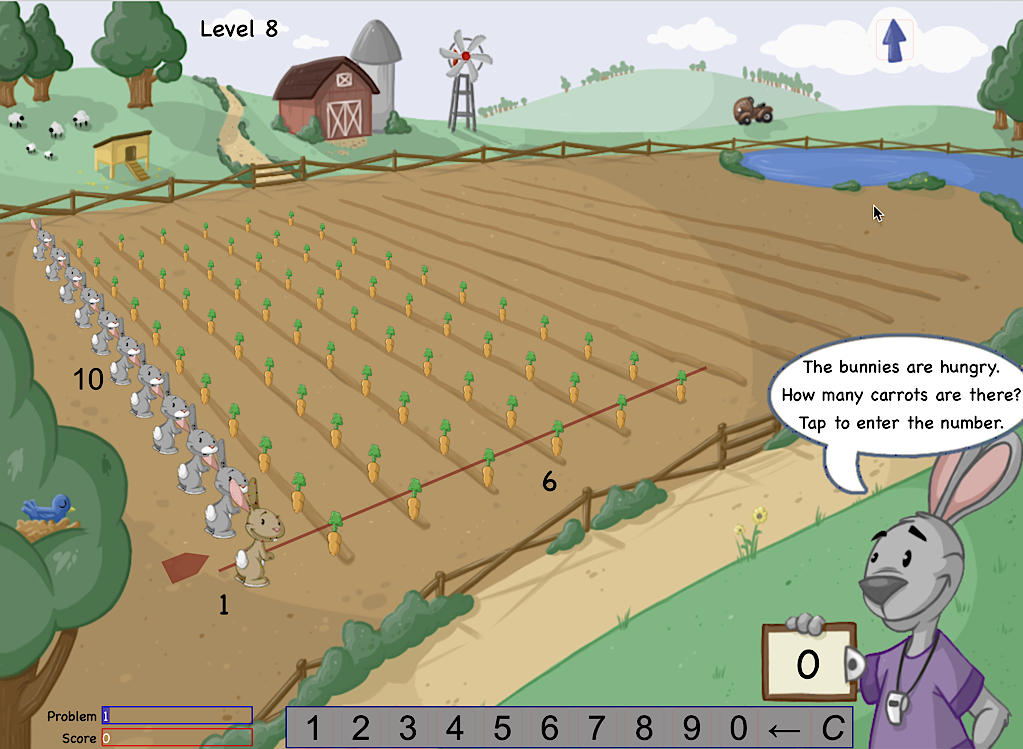I’ve lost track of how many parents have quizzed me as to why the mathematics their children are learning is so different from what they remember in school. “Why must my kids study more than one way to multiply? Isn’t memorizing their multiplication facts enough?” is a frequent lament. James Tanton, Mathematician in Residence at the Mathematical Association of America, convincingly addresses these concerns in his recent YouTube video below:
Tanton’s advocacy of the area model for multiplication is a nice lead-in for a collection of interactive array models of multiplication that we designed for the Dynamic Number project.
In the Web Sketchpad model below (and here), students use an array model to model and solve multiplication problems. They start by dragging the point in the upper-right corner of the array to adjust the array’s dimensions. They then split the array into as many as four smaller arrays that represent “friendly” facts—facts whose products they already know—by dragging the point inside the array. Students then add the partial products to solve the original multiplication problem. Page two of the websketch (accessible via the page controls in the lower-right corner) allows students to explore larger arrays.
As a companion model, the websketch below (and here) allows students to decompose two-digit multiplication problems into tens and ones by manipulating a dynamic array of base-ten blocks. Page two of the websketch gives students the option to turn the grid lines on or off.
In 2009, Scott and I began experimenting with interactive array models and decided that they could form the basis of an appealing game for elementary-age students. Our Bunny Times game replaces the conventional arrays above with adjustable arrays of carrots.
An annotated list of all our elementary-themed blog posts is here.
